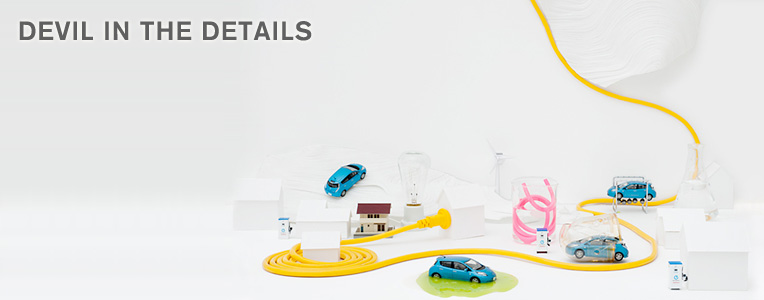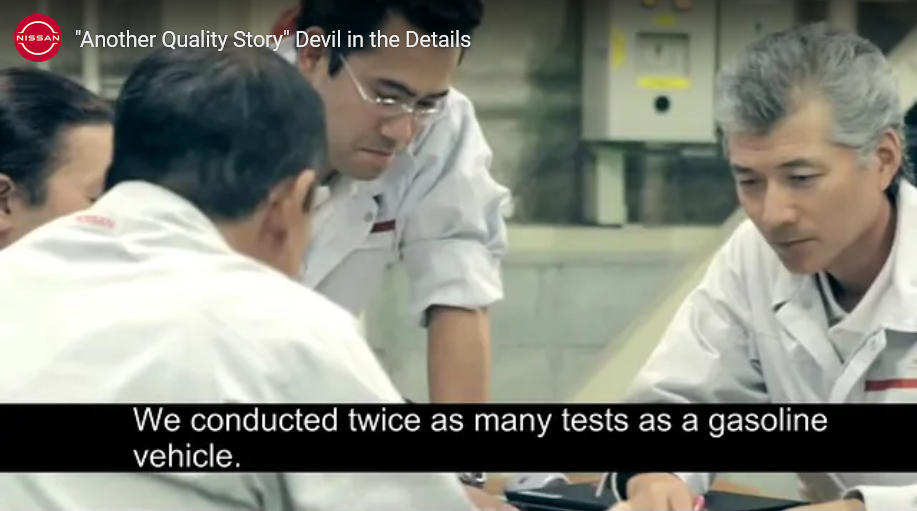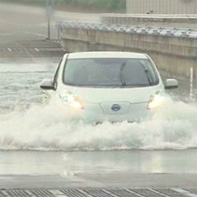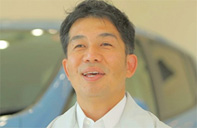Devil in the Details


"Another Quality Story" Devil in the Details3:13
Faced with a new kind of car never tested before, one man's unenviable mission was to solve all the electric vehicle's safety conundrums.
What if you had to drive through a puddle? And what about in the remote chance you are struck by lightning? Let's say your pet chewed on the charging cable? What if. In the remote chance that. Let's say. Etc etc.
There is a man who has the heads-up on all the dangers you might face in a Nissan car. His research field is inexhaustible: Everything and anything that can happen to a vehicle. Whatever minute occurrence life throws at a car, it's his job to test it out.
Kouji Tanaka was part of the EV Safety Protection Project Technical Development team for Nissan's Leaf. His tireless work assessing all manner of precise details through countless safety tests was honored in 2010 with the COO Award, the top prize for Nissan's 28,000 employees.

Driving through a deep puddle of water: One of the many tests for conductivity performed on Nissan Leaf.
All-New Technology Requires All-New Testing
"What are the dangers for an electric vehicle? What kind of tests should be done? We had to really find out through feeling our way," recalls Tanaka. After all, Nissan Leaf was the first electric vehicle the company had mass-produced.
This required the team to create a whole new set of tests they had never conceived of before in all their years of perfecting gasoline vehicles. They had to envision the narrative of drivers actually using the new EV in order to shed light on any potential weaknesses, on any chinks in the armor. The team ended up performing tests narrowed down from over 1,000 hypothetical situations.
The clues for devising these tests always lie in everyday life. Walking the dog leads to "So, what if the dog chewed the EV's charging cable?" Spotting a woman out shopping inspires the question "Would you get an electric shock if you were wearing a necklace while charging up the car?" These kinds of moments help Tanaka realize the delicate details of his tests. He also researched the locations of charging stations, went knocking on the door of electronics manufacturers, and even analyzed golf carts.
What's more, among this plethora of new Nissan Leaf safety tests, there was still one more hurdle nagging Tanaka: The schedule. Time was tight and it called for innovations in the working methodology.
So, at the point when he would ordinarily build a test car, Tanaka was working right alongside Leaf's designers while it was still at the planning stage and there was no testing vehicle yet. He left the Tochigi test site and stayed for months at the NISSAN Technical Center in Kanagawa until he had understood everything.

Kouji Tanaka, leader of the Nissan Leaf safety testing team.
Tanaka's efforts paid dividends and Nissan Leaf cleared all its safety checks on schedule. This is a man who relentlessly pursues his curiosity for cars and how they work. The devil might well be in the details but when it comes to the safety of a new, innovative vehicle, the challenge is the engineer's reward.
Examples of the safety tests for Nissan Leaf
Road Surface Friction
What if the car drives over an uneven surface? Whereas a gasoline car has a muffler, under a Nissan Leaf is a battery. The test recreated the road surfaces in countries around the world to check friction or interference with the underside of the vehicle.
Electric Shocks or Shorts When Charging
Tested out the charging technology in an EV, so that in whatever situations or conditions you charged up your car, you would be able to do it safely without risk of electrical leaks or injury.
High Pressure Car Wash
Tested out when you cleaned your car, what would happen if it were directly sprayed with water, even if using a car wash with the most powerful water pressure in the world.

